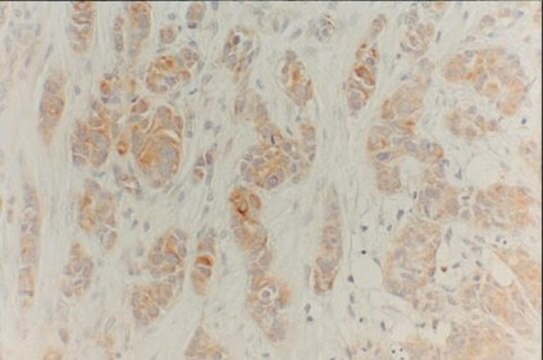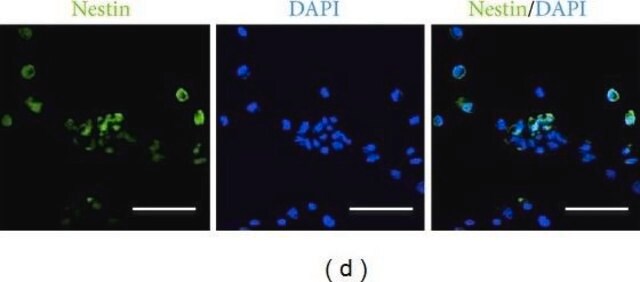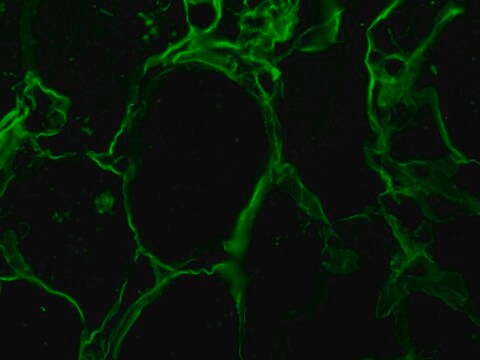MAB4190
Anti-Ki-67 Antibody, clone Ki-S5
clone Ki-S5, Chemicon®, from mouse
About This Item
Empfohlene Produkte
Biologische Quelle
mouse
Qualitätsniveau
Antikörperform
purified immunoglobulin
Antikörper-Produkttyp
primary antibodies
Klon
Ki-S5, monoclonal
Speziesreaktivität
human
Verpackung
antibody small pack of 25 μg
Hersteller/Markenname
Chemicon®
Methode(n)
flow cytometry: suitable
immunocytochemistry: suitable
immunohistochemistry (formalin-fixed, paraffin-embedded sections): suitable
western blot: suitable
Isotyp
IgG1
NCBI-Hinterlegungsnummer
UniProt-Hinterlegungsnummer
Versandbedingung
ambient
Lagertemp.
2-8°C
Posttranslationale Modifikation Target
unmodified
Angaben zum Gen
human ... MKI67(4288)
Allgemeine Beschreibung
Spezifität
Immunogen
Anwendung
Epigenetik & nukleäre Funktionen
Zellzyklus, DNA-Replikation & -Reparatur
A 5-10 μg/mL concentration of a previous lot was used in IC.
Immunohistochemistry:
A 5-10 μg/mL concentration of a previous lot was used in IH.
Immunohistochemistry:
5-10 µg/mL on formalin fixed paraffin tissue. Citrate buffer-microwave antigen retrieval
Flow Cytometry:
A previous lot of this antibody was used in FC.
Western blot:
1-10 µg/mL
Optimal working dilutions must be determined by end user.
Qualität
Western Blot Analysis:
1:500 dilution of this antibody detected cell-cycle-associated protein of 345 kDa and 395 kDa on 10 μg of A431 lysates.
Zielbeschreibung
Physikalische Form
Lagerung und Haltbarkeit
Hinweis zur Analyse
Tonsil tissue, A431 cell lysate
Sonstige Hinweise
Rechtliche Hinweise
Haftungsausschluss
Sie haben nicht das passende Produkt gefunden?
Probieren Sie unser Produkt-Auswahlhilfe. aus.
Empfehlung
Lagerklassenschlüssel
10 - Combustible liquids
WGK
WGK 2
Flammpunkt (°F)
Not applicable
Flammpunkt (°C)
Not applicable
Analysenzertifikate (COA)
Suchen Sie nach Analysenzertifikate (COA), indem Sie die Lot-/Chargennummer des Produkts eingeben. Lot- und Chargennummern sind auf dem Produktetikett hinter den Wörtern ‘Lot’ oder ‘Batch’ (Lot oder Charge) zu finden.
Besitzen Sie dieses Produkt bereits?
In der Dokumentenbibliothek finden Sie die Dokumentation zu den Produkten, die Sie kürzlich erworben haben.
Kunden haben sich ebenfalls angesehen
Unser Team von Wissenschaftlern verfügt über Erfahrung in allen Forschungsbereichen einschließlich Life Science, Materialwissenschaften, chemischer Synthese, Chromatographie, Analytik und vielen mehr..
Setzen Sie sich mit dem technischen Dienst in Verbindung.













